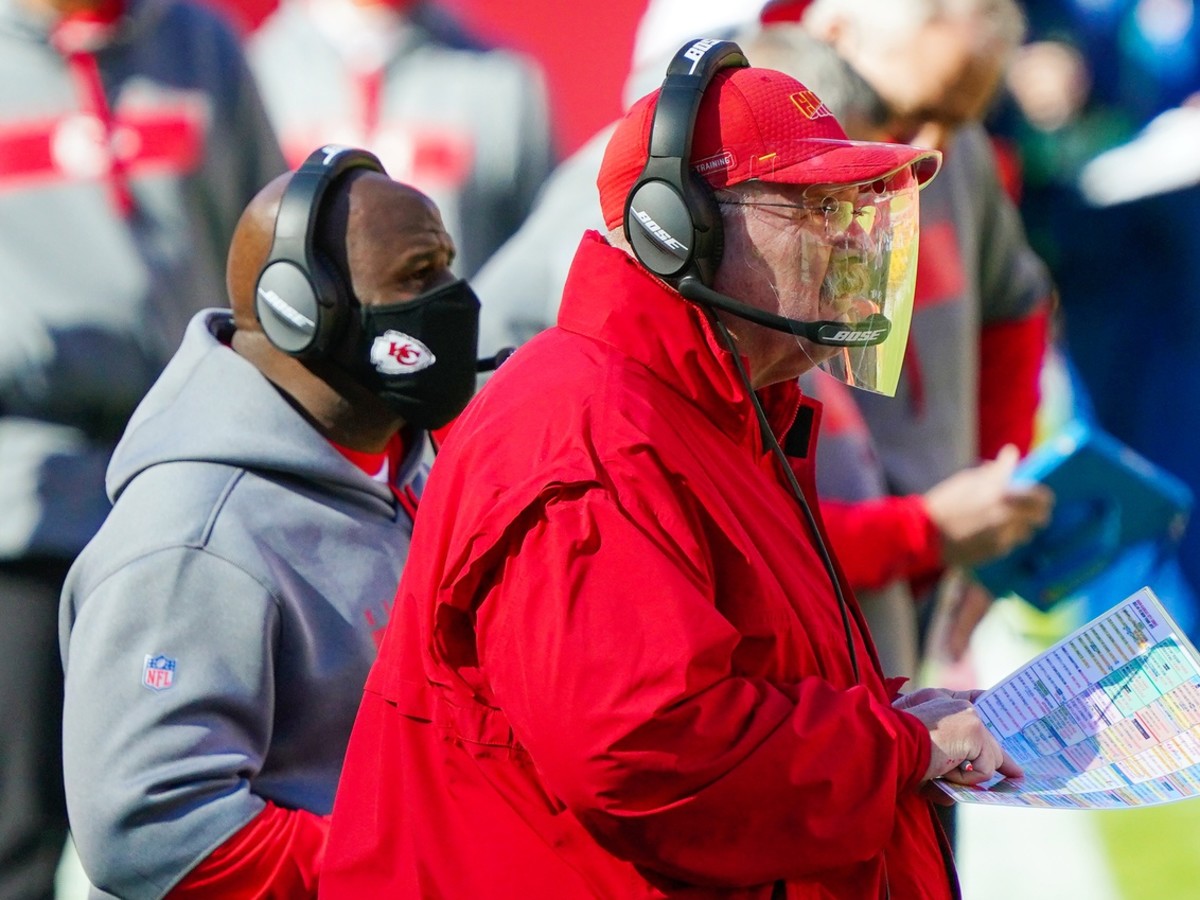Will the Chiefs’ Play-Callers Be Under More Pressure This Season?
If you found yourself running a bit behind schedule, setting the television up to enjoy Kansas City Chiefs football last season, chances are that Patrick Mahomes and his crew had already put some points on the board by the time you sat down and got comfortable.
Like an aggressive boxer getting a leg-up on a scorecard, no team shook off the cobwebs and punished defenses on its first few series as forcibly as Kansas City. Over a team’s first three drives, the Chiefs ranked No. 1 in plays (7.7), net yards (48.4) and score percentage (59.3%) while finishing top-three in avoiding punts, time of possession and point differential.

It speaks volumes to the Chiefs’ offensive coaching staff and how dominant they’ve been during the “first 15,” the scripted, designed play calls to start a game — and even slightly beyond. Though, as we pivot from 2021-22 to 2022-23, it does offer up a juicy question.
Sloppiness and complacency crept their way into the Chiefs’ offense during those midway drives. It became a trend — almost like a microwaved Hot Pocket, as our own Joshua Brisco likened them to — to see the Chiefs kickstart games on a heatwave, cool throughout the middle, then regain their mojo towards the end. Given the seismic shift of this year’s receiving group (including the loss of a certain All-Pro receiver), as well as a potentially-different running back committee, one could wonder: Will there be added pressure and expectation on the play-callers to soften those blows this season?
A few months back, it felt interesting to at least briefly imagine how creative Andy Reid and Eric Bieniemy could get with their play designs as they try to fill in Tyreek Hill’s impact and talent with more of a sum-of-parts approach in 2022-23. Hill played a considerable role in defenses shifting to more two-high coverage looks against Kansas City last season and while it’s unclear whether opponents will ease up on that defensive look without him in the lineup, the sheer idea of it and the creativity it would allow comes into play immediately.
At the very least, thinking big-picture, the margin for error feels thinner with the 2022-23 Chiefs. Many of their pass-catchers range somewhere between unproven and unspectacular outside of Travis Kelce. One of the ways that they could fix that: more drive-for-drive consistency.
So, what changes as the Chiefs hit that midpoint of the game? More often than not, they’ve opened up a lead, which perhaps explains both some complacency and a simple case of the defense needing to buckle down and get a stop with sharpened focus. Of the Chiefs' 27 turnovers, 14 of them came during that aforementioned middle-of-the-game stretch. It included ill-advised throws, untimely drops, and … more untimely drops.
The Chiefs were tracked for 33 drops last season, good for the ninth-most in the NFL. The players they’ve added this offseason — along with the offense being due for a regression — could be key in helping the Chiefs become a more healthy per-drive team.
It promises to be exciting seeing who steps in behind Kelce as the team’s go-to third-down target for Mahomes. JuJu Smith-Schuster would be the easy choice, but Mecole Hardman and Marquez Valdes-Scantling could be enticing threats. Valdes-Scantling quietly worked behind Davante Adams as one of the NFL’s third-down pass-catchers with the Green Bay Packers. Over the last two years, his 481 third-down yards rank No. 29 — reminder that there can only be 32 WR1s in the NFL — and out of 19 third-down catches, he turned 18 of them into first downs.
Hardman isn’t far behind, as he's one of 74 pass-catchers with at least 300 third-down yards over that same time span despite 73 of those receivers having more receptions than him (17). As he continues to expand in both his role and route tree, that development feels important in how Kansas City avoids slight steps back from last year’s offense to this year’s version.
For what they lack in a star wideout, the Chiefs will compensate through diverse route-runners and the benefit of rostering the game’s premier quarterback. That's something that should make life easier for Reid and Bieniemy as they scheme and design these plays, as we see here:
Hardman, in particular, saw most of his touches — either through play design or through ability — on first and second downs, where his yards after the catch ability and shiftiness were key in helping avoid said third downs altogether.
The moments he did turn his third-down catches into conversations tell quite a story though; take the 53-yarder against the Bengals for instance, where Mahomes eyes him from the jump, wholly knowing No. 17 will sneak to that unoccupied spot along the boundary for a catch. Or the third-and-3 snag against New York. There's no overthinking: Hill and Hardman run a slant-flat-type concept, where he settles into the Giants' soft zone, moving the chains. He should be equipped to elevate in that role in 2022-23.
All told, it’s important to remember that even with some of those hiccups in the middle of games, Kansas City was still No. 1 in points (2.81), plays per drive (7.17) and three-and-outs avoided (1.06%). As long as Mahomes is under center and Reid’s headset is functional, the Chiefs’ offense will always be a threat to be one of NFL history’s best.
With good regression on their unlucky drops, better execution in those middle-of-game drives and both the receivers and play-callers ramping their games to fill in that cheetah-sized void, the Chiefs would be positioned to be — surprisingly — what many experts aren’t projecting: the NFL’s best offense.
And if they accomplish that feat, you certainly might live to regret being late setting that television up and missing that opening touchdown drive.
